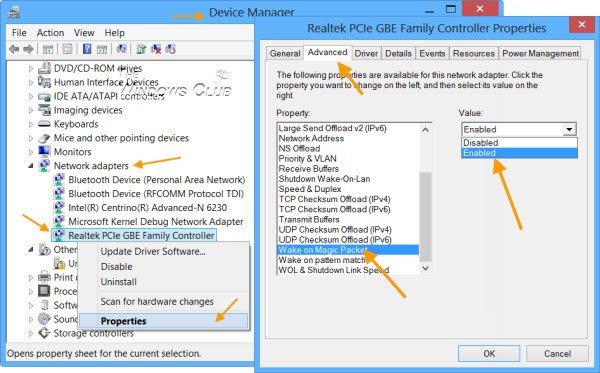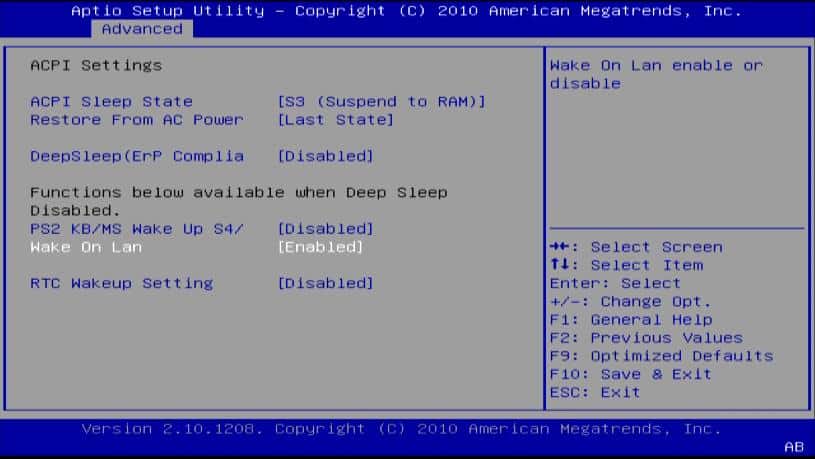

One cause may be that the network environment generates wake-up patterns too frequently. For example, the computer may wake up soon after it enters a power-saving state. However, unwanted wake events may occur after you enable WOL. WOL can be an effective way to conserve power while keeping a computer reachable on the network.
#Wol wake up windows 7
Therefore, by default, WOL is disabled in Windows 7 and in Windows Vista. These unwanted wake-up events may occur in especially noisy environments such as enterprise networks. However, in some networks, network traffic may wake up a remote computer by mistake. Such protocols do not use these packets to wake computers. For example, routers use ARP packets to periodically confirm the presence of a computer. However, some networking protocols use these packets for other purposes. In most cases, a wake-up pattern or a Magic Packet enables remote access to a computer that is in a power-saving state.


A directed packet to the MAC address of the network adapter.By default, Windows 7 and Windows Vista listen for the following packets when you enable WOL: One kind of special data packet contains a wake-up pattern. WOL wakes the computer if it receives a special data packet. When you enable WOL, the network adapter continues listening to the network when the computer is asleep. In Windows 7 and in Windows Vista, the WOL feature can wake a remote computer from a power-saving state such as sleep.
#Wol wake up how to
This article explains why unwanted wake-up events occur when you enable the Wake On LAN (WOL) functionality in Windows 7 and in Windows Vista, and describes how to configure the computer to wake only in response to a Magic Packet.Īpplies to: Windows 7 Service Pack 1 Original KB number: 941145 Introduction


 0 kommentar(er)
0 kommentar(er)
